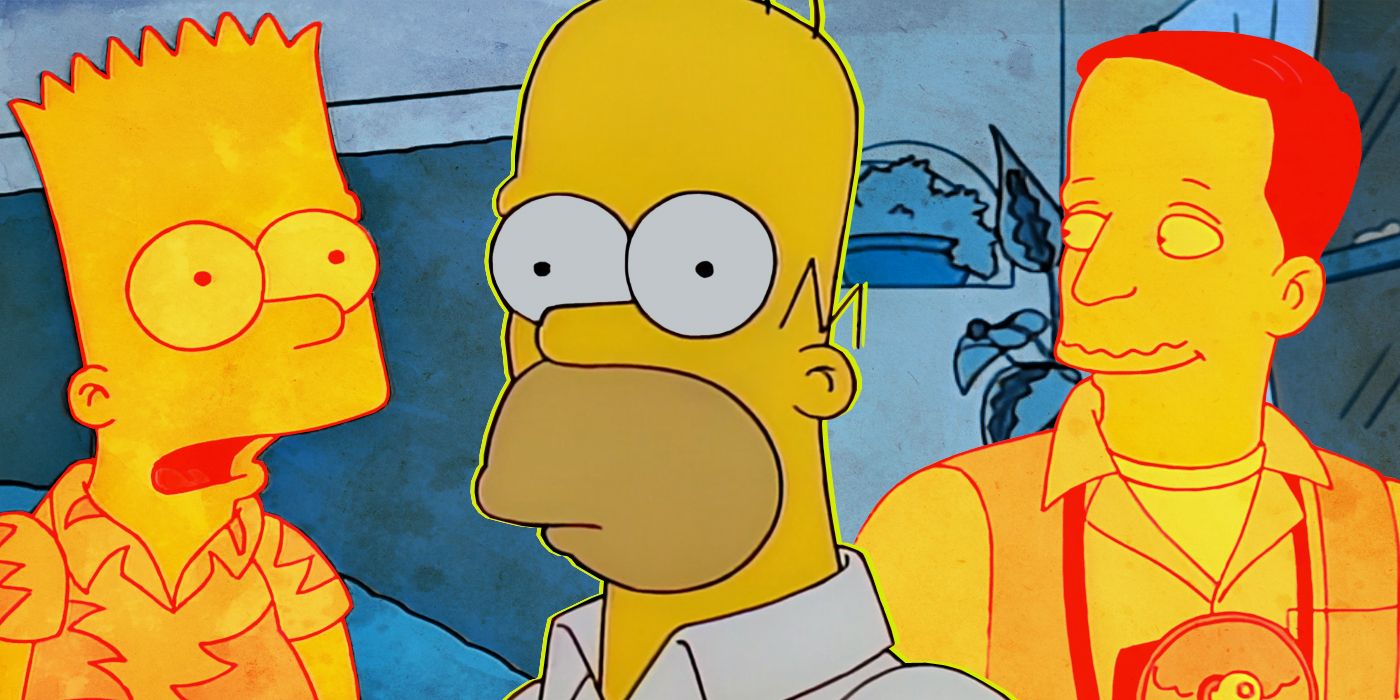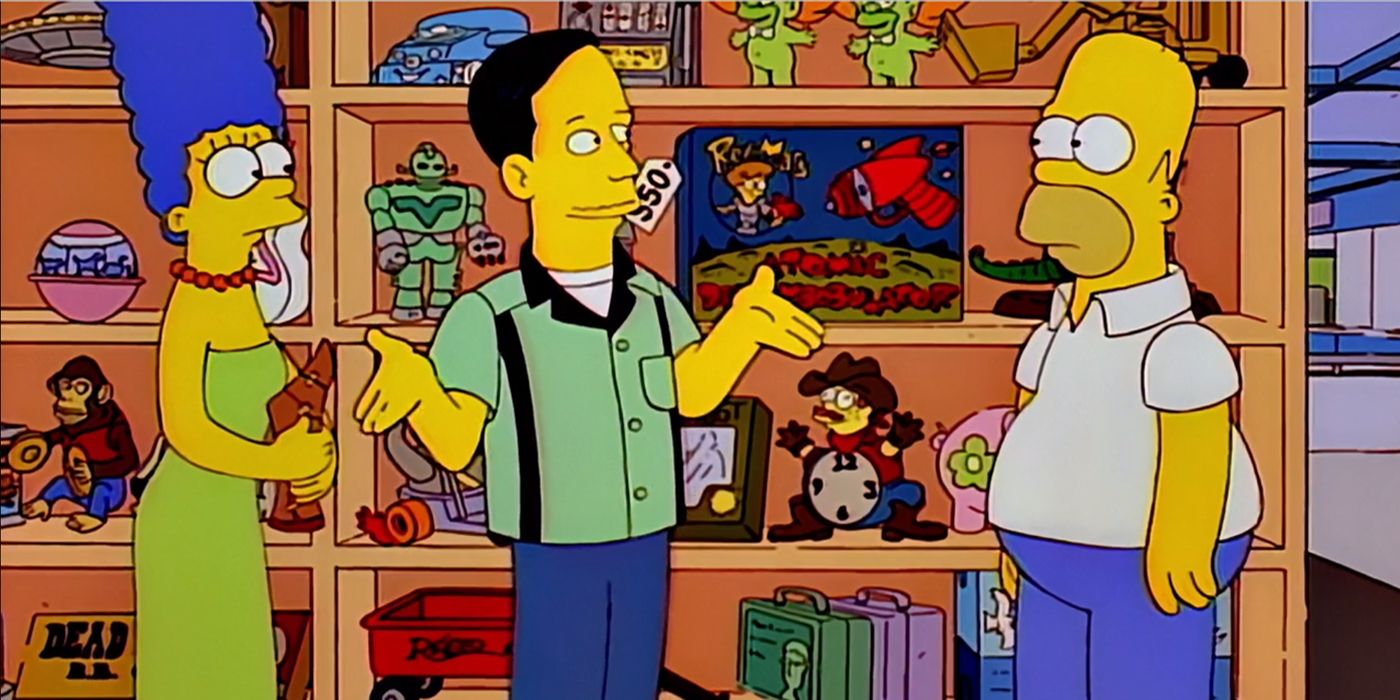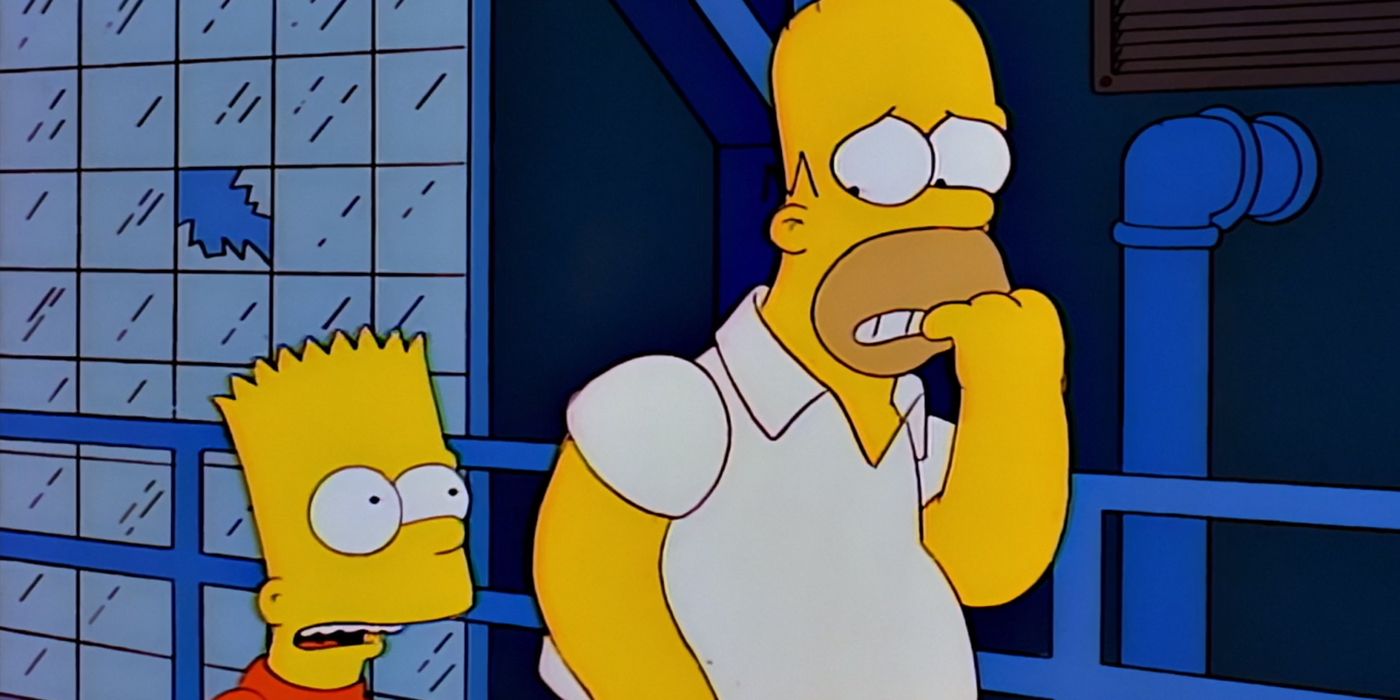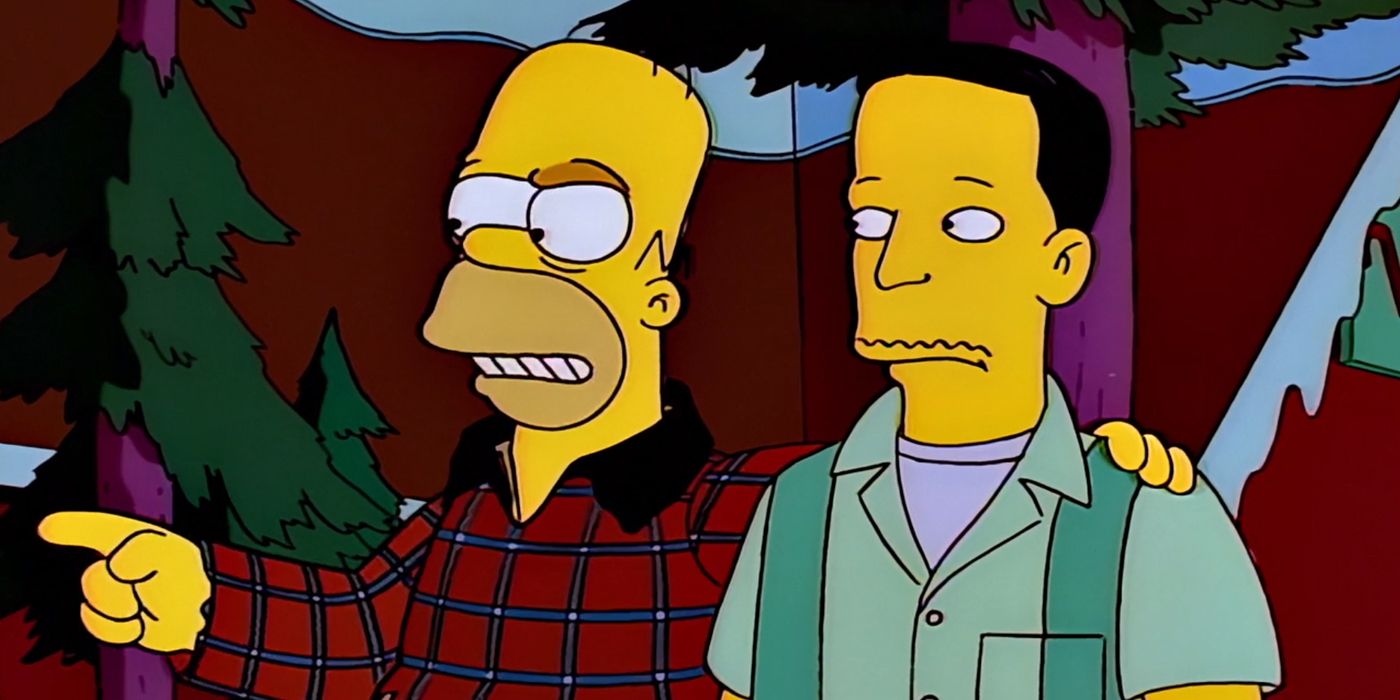The long-running animated institution known as The Simpsons hasn’t been afraid to play with the tropes and expectations of viewers. This was particularly true with the eighth season episode "Homer's Phobia," which featured main character Homer Simpson expressing fear and objection to the notion that son Bart might be gay. To the show's immense credit, it manages to find humor in the absurdity that ensues while avoiding making Homer completely irredeemable in the process.
“Homer’s Phobia” is a product of Bill Oakley and John Weinstein's tenure as showrunners for The Simpsons. A writing team who'd joined during its third season, the duo would oversee production in Seasons 7 and 8. Oakley and Weinstein set about expanding the universe of the show and examining the psychologies of the characters. In the case of decidedly unimaginative Homer Simpson, they explored his insensitivity toward an openly gay man and his fears that his only son might be "turning gay" through exposure.
Writer Ron Hauge and director Mike B. Anderson manage to make Homer's incredible and overblown ignorance almost understandable and completely in character. It certainly helps that the character propelling the story is a fully realized Springfieldianite with a terrific vocal performance by filmmaker John Waters. Premiering on February 16, 1997, “Homer’s Phobia” sees the Simpson family meeting charmingly quirky novelty store owner John (voiced by Waters), who gets invited over to the Simpsons' equally quirky household.
Homer suggests the following morning they have John and his girlfriend over again. Marge indicates this may be an issue, because John is gay. Shocked, confused and resentful toward John for not being more up front about his sexuality, Homer is chided by Marge for his sudden change in opinion as she and the rest of the family set out for an afternoon with their new friend. Bart begins to imitate John and is subsequently seen wearing a Hawaiian shirt, which Homer explains are only worn by gay men and “big fat party animals” (like himself). Although Marge reiterates that Homer sounds ridiculous, this sets him on the path to getting his son re-interested in women.
A few failed attempts at "fixing" Bart lead Homer to plan a hunting expedition. Unable to find deer in the wild, father, son and hanger-ons Barney and Moe (who blames Bart's situation on MTV and diet soft drinks) break into the Santa’s Village amusement park to shoot a reindeer. Attacked by their intended prey, Homer and Bart are saved by John -- albeit only after Homer had been battered and bruised by the herd. Homer apologizes to John, who wryly notes that to gain his acceptance all he had to do was save his life. While suggesting it may be his concussion talking, Homer then tells Bart that however he decides to live his life, he has his father’s support. This confuses Bart until Lisa explains that Homer thinks he’s gay.
While The Simpsons had included queer characters before "Homer's Phobia," they had been subtle or coded, like recurring figures Waylon Smithers or Patty Bouvier (both would come out in later seasons). John was the first openly gay character introduced on The Simpsons, although beyond the implication of a relationship between John and Smithers, very little of his personal life was shown. The mere fact that he was given such a prominent role in an episode was itself a fairly large step forward for representation and normalization, particularly at a point when other television shows wouldn't dare do the same -- much less with such relative nuance and respectfulness.
A testament to John's effectiveness as a character comes during the third act. Fretting over the whereabouts of Bart and Homer late into the night, Marge receives support from John. Although sharing few scenes together, the connection between the two feels sincere and genuine, and his presence in the scene fitting. "Homer's Phobia" was John's only major appearance in the series, but he would cameo in later episodes and the long-awaited The Simpsons Movie (and presumably reappear in the equally long-awaited sequel as well). "Homer's Phobia" would go on to win the 1997 Emmy Award for Outstanding Animated Program (Programming One Hour or Less) and 1998's GLAAD Media Award for Outstanding TV Individual Episode, among other accolades.
Oakley and Weinstein's tenure as showrunners ended with a few holdover episodes during Season 9 (including controversial episode "The Principal and the Pauper"), but is deserving of being remembered for the heights they strived for in storytelling and character, and a willingness to take the Simpson family to places few would dare to go. They, writer Hauge and director Anderson told a story where a beloved animated icon grapples with their homophobia in a way that doesn't Flanderize the character, leading to one of The Simpsons' finest (half) hours.




